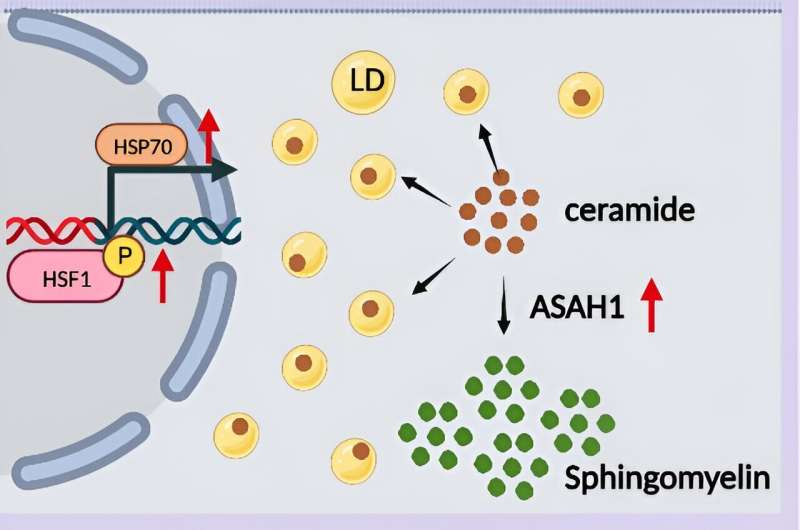This article has been reviewed according to Science X's editorial process and policies. Editors have highlighted the following attributes while ensuring the content's credibility:
fact-checked
proofread
Scientists provide novel insights into the effects of high temperature on nutritional obesity

In contemporary society, obesity has emerged as a worldwide chronic metabolic disorder, imposing substantial burdens on both individual health and health care systems. The insulin resistance that accompanies obesity poses a serious threat to human health.
A recent study published in Life Metabolism reports that high temperature can ameliorate insulin resistance by promoting ceramide catabolism in skeletal muscle tissue (SMT) of obese mice.
The researchers utilized a diet-induced obese (DIO) mouse model and subjected them to either room temperature (RT) or high temperature (40°C) treatment (HT). They found that HT promoted SMT glycogen synthesis, increased the phosphorylation level of protein kinase B (AKT), and lowered blood glucose levels in SMT, indicating that HT improved insulin resistance (IR) in DIO mice.
Additionally, HT can sustain the decay phase of heat shock factor 1 (HSF1), thereby activating the gene expression of heat shock proteins (HSPs). Metabolomic and lipidomic analyses of SMT indicated that HT promotes ceramide breakdown, leading to an increase in sphingomyelin and sphingosine.
Further investigation revealed that the degradation of ceramides is dependent on the expression of the acid ceramidase N-acylsphingosine amidohydrolase 1 (ASAH1), and inhibition of ASAH1 can alleviate the high temperature-mediated insulin resistance of SMT in DIO mice.
This study revealed a previously unknown connection between high temperature exposure and sphingolipid metabolism in obesity, suggesting that HT can ameliorate IR by promoting sphingolipid degradation in SMT of obese mice.
This discovery not only provides new insights into addressing obesity and insulin resistance but also offers theoretical support for the development of hyperthermia therapy as a novel strategy for treating obesity and metabolic diseases.
More information: Qiankun Wang et al, High temperature ameliorates high-fat diet-induced obesity by promoting ceramide breakdown in skeletal muscle tissue, Life Metabolism (2024). DOI: 10.1093/lifemeta/loae012




















